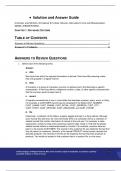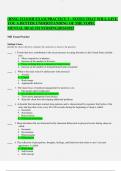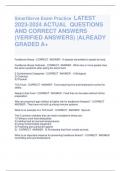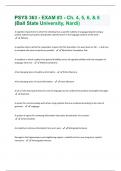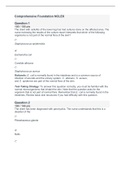Exam (elaborations)
SOLUTION MANUAL FOR DATA BASE SYSTEMS, DESIGN, IMPLEMENTATION AND MANAGEMENT 14TH EDITION BY CARLOS CORONEL, STEVE MORRIS
SOLUTION MANUAL FOR DATA BASE SYSTEMS, DESIGN, IMPLEMENTATION AND MANAGEMENT 14TH EDITION BY CARLOS CORONEL, STEVE MORRIS
[Show more]
